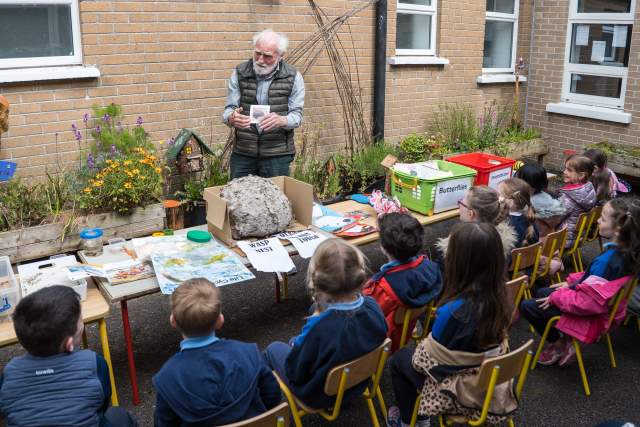Around Kilkenny Castle
Through using the resources below, and undertaking a trail around Kilkenny Castle, the children should learn about:
1. The people associated with Kilkenny Castle – the Butler family and the servants.
2. Certain design features of the castle, such as limestone, moat, sally port, arrow
3. loop windows, servants’ entrance, coat of arms and lead hoppers.
4. The strategic site that the castle is built on.
5. How the building is changed and why. How the defensive character of the castle became less important as time went by.
Skills and concepts development:
Children should be able to:
1. Time and Chronology:
- Describe events as before/after/, later/earlier
- Use a simple timeline
- Use dates such as 1681
2. Change and continuity:
- Recognise how the castle has changed at different periods
- Identify features that have remained the same
3. Cause and effect:
- Recognise the link between the site of the castle and the need for the lord and soldiers to defend themselves in the early centuries of the castle.
- The importance of displaying a coat of arms for a family.
- Recognising how people’s needs change and the impact that has on a building, for example the moat being filled in and the change in the design of the windows.
4. Using evidence:
- Visiting and examining the building
5. Empathy:
- Imagine and discuss the feelings of the servants working in the castle.
Methodologies:
Among the methods which may be used are:
- Story lesson about the Butler family
- Comparing a modern photo of the entrance to Kilkenny Castle with an 18th century
- painting
- Exploring the environment, using the trail
- Integration with other subjects: geography (limestone), art (designing coats of arms), maths (shape)
Sources Used:
- John Bradley, Kilkenny, historic town atlas no. 10 (Dublin, 2000)
- John Bradley, Discover Kilkenny (Dublin, 2000)
- Katherine Lanigan and Gerald Taylor (eds) Kilkenny, its architecture and history (Kilkenny, 1977)
- William Neely, Kilkenny, an urban history, 1391-1843 (Belfast, 1989)
- William Carrigan The History and antiquities of the diocese of Ossory (Dublin, 1905)
- David Edwards, The Ormond lordship in County Kilkenny 1515-1642 (Dublin, 2003)
- Oral testimony of Castle Park constable, Liam Burke (3/08/2007)

